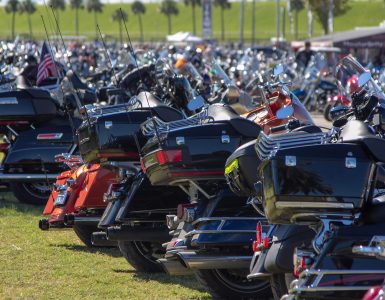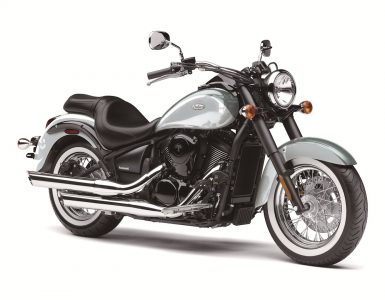How to sell my motorcycle: For one reason or another, you may decide to sell your motorcycle. However, fetching some good cash from your sale might be a bit hard, and you would probably strain to look for possible ways to get the most cash from your sale. Well, you don’t have to look further. Here, we provide ways in which you can make the most cash from selling your Yamaha, Honda, Harley-Davidson, or any other motorcycle.
How much worth is my motorcycle?
Once you make up your mind to sell your motorcycle, you should check it to understand how much worth it might be. You can determine this by looking at the factors that contribute to the resale value of your motorcycle. Below are the main factors to consider when evaluating the worth of your motorcycle.
Also Read:
Factors that determine the resale value of your motorcycle
1.Vehicle condition
The main factor that determines the resale value of your motorcycle is your vehicle’s condition. For instance, a motorcycle with excellent high-quality condition has a higher resale value compared to one that is in poor condition. The overall vehicle condition is the biggest contributing factor to the value of a motorcycle.
The items that determine the overall vehicle condition include:
Mechanical
- Engine
- Transmission
- Suspension
- Exhaust
- Chain
Frame/Chassis
- Frame damage
Replaceable parts
- Fairings
- Sliders
- Handlebars
- Windshield
- Bags
Wheels/Tires
- Stock vs. Custom
- Size
- Tire condition
Corrosion
- Chrome parts
- Wheels
- Forks
Rust
- Depending on the area
2.Vehicle miles
The shorter the distance a motorcycle has covered, the higher the value. For instance, a motorcycle that has covered 9,000 miles has a higher value than a motorcycle that has covered 12,000 miles.
3.Vehicle modifications
Modifications made on your motorcycle also influence its resale value. They can either increase or decrease the value of your motorcycle. What determines whether the value of your motorcycle increases or decreases is the type of modifications made. Expensive modifications such as stage kits, exhaust, and tour packs can increase the resale value of your bike. On the other hand, poorly done and cheap modifications such as removed factory parts, poor custom paint jobs, and/or poorly attached extended swing arms decrease the value of your bike. Some small modifications, such as accessories, only make little to no difference in value.
4.Market
Like most products, the value of motorcycles is also influenced by demand and supply. The value will be lower if there is more supply than demand, and increase when demand exceeds supply.
5.Seasonality
The worth of your bike can also vary depending on the seasons. It can fetch more money during riding seasons (between April through September) and less in other seasons.
6.Rarity
A rare motorcycle has a higher resale value than a common one. The following is what makes a bike rare:
- Low or halted production
- Niche market
- Limited factory paint
The bike should also be what people want to buy and possess, and one in which demand exceeds supply.
7.Age
A new motorcycle starts depreciating once you start riding it. On the other hand, an old motorcycle may start increasing in value if it is at least 25 years and classified as classic. Anything modified and older may fall under the vintage or antique class, bringing even more value.
8.Run ability
A motorcycle that can run very well has a higher value than one that can’t run at all. Battery and/or fuel issues can also lower the value of your bike.
9.Miscellaneous (Number of owners)
This is not a very important factor since not every buyer values this. However, if the buyer considers this, then your bike will fetch a lower price if it has had many owners. Such buyers perceive that a bike with a low number of owners is usually taken good care of. In some cases, specifically applying to private sales, it helps if the vehicle has a low number of owners.
Now that you have seen the factors that determine the value of your motorcycle, let’s look at the resale value calculator tools. These tools will help you estimate the value of your motorcycle.
Motorcycle resale value calculators
Kelley Blue Book: This calculator tool has been around for a long time and is one of the most used for vehicle valuations. They have a large database to give you a price estimate for any vehicle.
NADA Guides: The National Automobile Dealers Association (NADA) is also as old as Kelley Blue Book. This tool works on the assumption that motorcycles are in great condition. It doesn’t use a depreciation schedule to determine the worth of used vehicles. NADA typically provides pricing information with the presumption that motorcycles are all in great condition.
Hagerty Insurance Agency: Hagerty is the biggest insurance provider for specialty collector vehicles in the world. Its valuation tool pulls data from peer-to-peer sales as a factor. However, it doesn’t offer the largest database.
Classifieds/Peer-to-Peer Marketplaces: Apart from the above two ways, you can also estimate the value of your motorcycle by browsing through seller listings on classified sites. But, keep in mind that the prices listed may not be the final sale price.
All in all, the real value of your bike is the amount a buyer is willing to pay for it.
How to prepare your motorcycle for sell
Here is what you should consider when preparing your motorcycle for sell.
- Prep your motorcycle for the next owner
- Gather all motorcycle paperwork
- Find all your keys
1. Prep your motorcycle for the next owner
Restoring the performance of your bike is the best way to prepare it for the next owner. A fully functional motorcycle attracts the buyer and will fetch more money than one that doesn’t work well. Although the costs of upgrading your motorcycle to pristine specs might be higher, it pays in the end.
2. Gather all the motorcycle paperwork
There are several documents you need to sell your motorcycle. They include the following:
Title: The motorcycle title is a document that proves that the bike you want to sell is rightfully yours. In case you lost yours, then you will have to apply for a new one before you sell your bike.
Bill of Sale: This is simply a receipt usually given by the buyer, to the seller. It is a legal document with all the motorcycle details and is meant to prevent fraud in a private sale.
Motorcycle registration: If you have the title, you can sell your motorcycle without registration. However, if have a lien on the bike, you might have to obtain a current registration to carry on with the sale. You will also ensure that you remove the lien. It is also important to note that selling a bike with a line on it will follow a different process from selling a fully owned bike.
Proof of Residency: In some cases, you will be required to show proof of residency. This can be supported by documents such as utility bills (electricity, water, or gas) listed in your name. They should list your current address and be dated within the last 30 days.
Driver’s License: Whoever is on the title should also present their driver’s license. The driver’s license is simply an identity verification confirming that the motorcycle is yours and that you are authorized to sell it.
3.Find all your motorcycle Keys
It is important to also have all your motorcycle keys and include them as part of your sale. Finding them before the sale is thus required.
The above mention 3 things will help you prepare your bike for sale. But, you don’t necessarily need to have all of them, you can sell your motorcycle without any paperwork. But it is risky, especially for the buyer. Having the required paperwork makes the sale legal, protecting both the buyer and the seller.
Motorcycle Photography
There are different channels you can use to sell your motorcycle. Whichever channel you choose, you will require the best pictures of your bike to attract buyers. You can take the great pictures you need using a simple camera or a smartphone. Follow the tips below to take great pictures of your bike, just like a professional photographer.
Motorcycle photography tips
1. Wash your motorcycle
This should be the first thing you do before taking pictures. Cleaning the bike well will make the pictures more visually appealing than pictures of a dirty bike. This will attract the buyers more, encouraging them to check more details about the bike.
2. Background
Even better, taking photos of your clean bike in an aesthetically pleasing place makes them even more appealing. Choose a background that is free of distractions, so that the focus remains on the bike, and not on any other thing in the background (like a trash can, for example.)
3. Lighting
The lighting of the site where you intend to take your picture should be harsh or low. For instance, a photo taken in the afternoon with too bright sunlight can make the photos overexposed or create harsh shadows. On the other hand, photos taken in the evening, when the light is too low, could make the images look grainy. Such images don’t show much detail. The best time to take your photos is early in the morning or at dusk.
4. All angles
Taking photos of your bike from all angles is especially important if you want to sell it online since the buyer is not present to inspect the bike physically. Photos of the different angles will give more details of the bike. This gives the buyers a clear picture of your bike’s condition. Failing to take photos of your bike from all angles may make the buyer lose interest in your bike and instead look for other listings with more detailed photos.
You should take photos of your bike from the following angles.
- Front and backside
- Left and right side profile
- Odometer reading
- Modifications
- Close-ups – For trust and transparency, you should show it all, including the blemishes or damages (if any). This will help ensure that there is no surprise on the buyer’s side.
5. Tripod or steady hands
Taking shots while the camera is moving around makes the photos blurry. The use of a tripod can help with the steadiness required to take clear pictures. Alternatively, you can support your phone on a surface to keep it steady when taking photos. The third option is to be like a statue, where you don’t move at all while taking pictures. Being shaky will lead to blurry photos.
Motorcycle video tips
In addition to the photos, some sales channels allow you to upload a video of your bike. It is better to take advantage of this option when you find it. To make the best videos, be sure to follow the guidelines outlined in the above motorcycle photography section. In addition, follow the following motorcycle video tips.
1. Film horizontally
When you use a smartphone, it is recommended that you take the video horizontally. The main reason for this is to make the most of computer screens that are in landscape layout. Filming vertically will create black right and left borders, showing less of the bike.
2. What to film
Start by doing a full 360 degrees walk around. Position your camera at the hip level with the bike fully in the frame, as you steadily move around it. A gimbal can be helpful. But, if you don’t have one, just keep your hands steady to prevent the camera from shaking.
After taking a video of the whole bike, you can get close-ups of the odometer, modifications, tire tread, and anything important the buyer should know. You may as well demonstrate the startup and shutting down of the motorcycle.
3. Video length
When taking the video, you should also mind the length of the video. It should be long enough to showcase the bike without leaving any important details out. But you should be keen not to spend too much time covering one specific area of the bike.
If you can, keep the video to a length of between 1 to 3 minutes. Exceeding this length may discourage the viewers from watching the video further. The video length also helps in keeping the size of the video file at a minimum, making it easy for you to upload it to the listing site.
4. Sound/Audio
Just to maintain the focus of viewers, it is good to film on a site free of background noise. This can be helpful when you want to call out specific details that will be included in the sale. It may also be helpful when demonstrating that your bike is in good running condition.
How to sell a motorcycle privately
Pros
- You might get a higher cash offer: You might get a higher cash offer if you decide to sell your motorcycle privately. To sell privately, you have to list your bike on peer-to-peer marketplaces and set the price you would like to sell it.
Cons
- Slow and inconvenient: This is the major challenge you might face when trying to sell your motorcycle privately. First of all, you will have to spend your time signing up for accounts to list your bike on peer-to-peer marketplaces. You will also have to provide a detailed description of the bike and a price. After listing, you might have to wait for the bike to sell. If you are lucky, it might sell within a day, otherwise, it might take as long as 3 months or not sell at all.
- Fees: Many peer-to-peer marketplaces require seller listing fees. Once you list your motorcycle, it starts high in rank order. Your listing is pushed down with time when more people list their bikes for sale. This makes your listing less visible to buyers. Some marketplaces may offer promotion incentives that may require the seller to pay a fee to have their listing pushed to the top. The listing may stay on top during the promotion period, after which it drops again.
- Haggling is mandatory: After listing your motorcycle, you have to haggle with buyers before it sells. Sometimes you might have to deal with low offers and people who are not serious buyers. So, be prepared to deal with potential scams on these channels.
- Unsecure: Selling your motorcycle privately means that you are fully responsible for all the paperwork, communication, and payment. Many of the classified marketplaces don’t do well in protecting your personal information and privacy. They also attract more bad actors than the other sales options. Therefore, you can’t be sure if you are dealing with a trustworthy person.
- Transportation: By listing your bike on peer-to-peer marketplaces, you may attract buyers from further away places, such as from a state different from yours. This way, you will have to organize for pickup and delivery services.
- Test drives: Some interested buyers may want to test drive the motorcycle before they buy the motorcycle. This can create risky and liable situations.
How to sell a motorcycle to a dealer
Pros
- Fair Market Value: There are a lot of dealers who buy and sell motorcycles. Since they aim to make a profit from their business, you should expect to get the most cash, considering that they will have some expenses to pay. But you will get a fair market value. Some dealers offer to sell bikes on consignment, where the seller is not paid until the bike is sold. The advantage of selling on consignment is that you may get a higher payout than the full upfront payout.
- Trade-In – If you are selling your motorcycle to get a new one, then a dealer is your best option. Dealers give you the option to trade in your bike for a new one. They may also have special offers that may not be available in other sales channels.
- Local – There are very many motorcycle dealers, meaning there is a good chance you can find one closer to where you live.
Cons
- Inconvenient: If you decide to sell to a dealer, you will have to go to them so that they can physically assess your bike’s value. This will require time out of your day.
How to sell a motorcycle to an auction
Pros
- You can get a higher cash offer: Unlikeselling your motorcycle privately, you might get even more cash when you list your bike and sell it through an auction marketplace. Auctions create competition among buyers who try to outbid on price, subsequently driving the motorcycle price up.
- Vehicle Spotlight: Another benefit of selling to an auction is that your motorcycle will be spotlighted. This way, it can attract many buyers. Some auctioneers hold live events as well as broadcast on TV.
- No Negotiation – If you sell your motorcycle to an auction, you are saved the trouble of negotiating with the buyer. This is because auctions have a start and end date and you will know exactly when your bike will. The buyers always come prepared, maximizing your motorcycle’s exposure to the auction audience.
Cons
- No sales guarantee: Despite the auctions having start and end dates, it is not a guarantee that your motorcycle will sell at the price you want. It may not even sell at all.
Sell rights locked in: Some auctions will require sole selling rights for a specified period, usually before and after the auction. During that period, your assets won’t be liquidated.
Limited exposure: Some auctions require the buyer to register. This creates exclusivity which leads to a limited number of eligible buyers.
Conclusion
Having made it this far, you now have all the information you need to sell your motorcycle for the most cash. The article has also provided you with several options in which you can sell your bike and choose one that works well for you.






Add comment